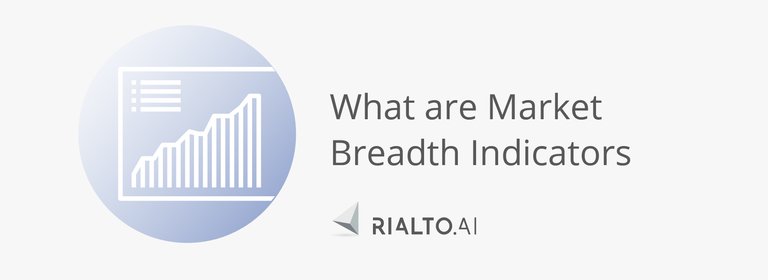
With our new platform launch quickly approaching, it’s time to start talking more about the upcoming features. One of the major changes introduced on the new platform will be the addition of trading indicators.
Trading indicators are calculated from instrument’s past price and volume activity and used by traders to help identify good entry and exit points. There are many different indicators available from many different trading platforms and it’s easy to get overwhelmed with too much information. It is therefore important to keep the charts clear and use only the best and most relevant indicators.
There are many common and well known indicators such as Chart Patterns, Moving Averages, Relative Strength Index (RSI), Bollinger Bands and Moving Average Convergence Divergence (MACD), but there are also many other indicators, which can help us determine the best entry/exit points. One such example would be indicators based on market breadth.
What is market breadth?
Market breadth in general represents a measure of advancing versus declining asset prices or volumes and is used to detect the direction of the overall market. There are many different indicators that can help measure market breadth and we will look at four that are most relevant to the crypto markets.
Percentage of assets with prices above a particular moving average.
This indicator compares the number of assets with prices above a chosen moving average in proportion to all measured assets, for example top 50 or top 100 coins/tokens. A value of around 50% indicates that the market is in equilibrium, whereas values above 50% and below 50% indicate bullish and bearish market sentiments respectively.
Number (or percentage) of new all time high assets or new all time low assets.
This indicator is another way to gauge market sentiment by following the number or percentage of new all time high and new all time low priced assets. This can be done at different intervals not just all time for example daily, weekly, monthly or yearly. A high number/percentage of new highs indicates a bullish trend whereas a high number of new lows may mean the bears are taking over the market.
Number of assets with increasing volume and number of assets with decreasing volume.
A change in the direction (local minimum or maximum) of the these two measures can help predict a market sentiment reversal.
Number of assets with increasing price and number of assets with decreasing price.
A change in the direction (local minimum or maximum) can also be a sign of market sentiment reversal.
If you are interested in this topic, we would encourage you to read up more about it, as it can really make the difference between making profitable and losing trades.
In future posts we will look into other interesting indicators, which we are investigating and testing for possible launch on our new platform.
To stay up to date with our project, be sure to subscribe to our newsletter and follow us via our social media channels linked below.
Newsletter | Twitter | Medium | Facebook | Linkedin | Telegram